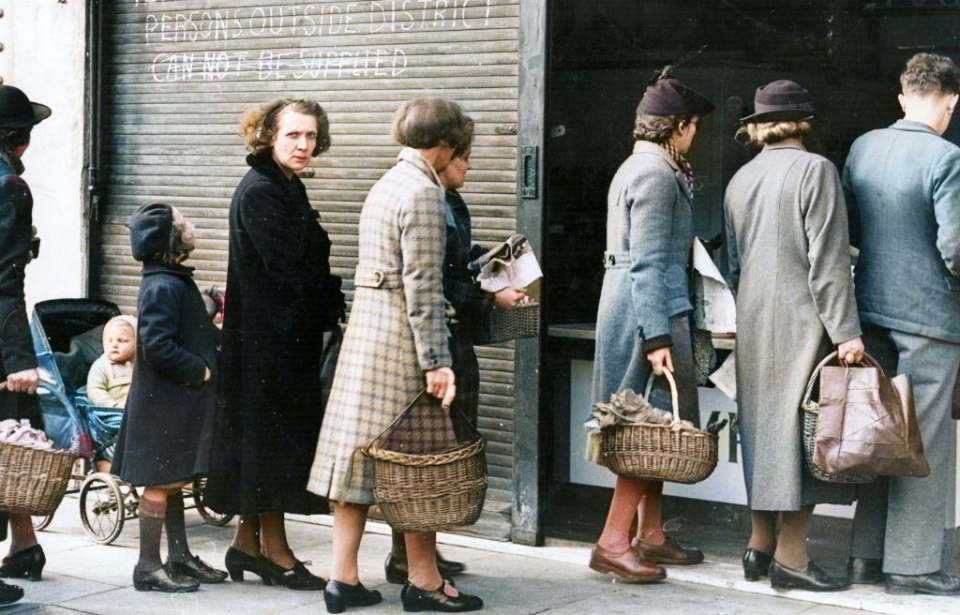Rationing is often thought of as a type of “starvation diet,” but did you know that wartime rationing not only changed the dietary habits of British people, but also improved their health? The proof is in the pudding (or, maybe, the lack of it), as studies showed increased wellbeing among Brits, thanks to a food rationing system that spanned 14 years.
Britain heavily relied on foreign imports
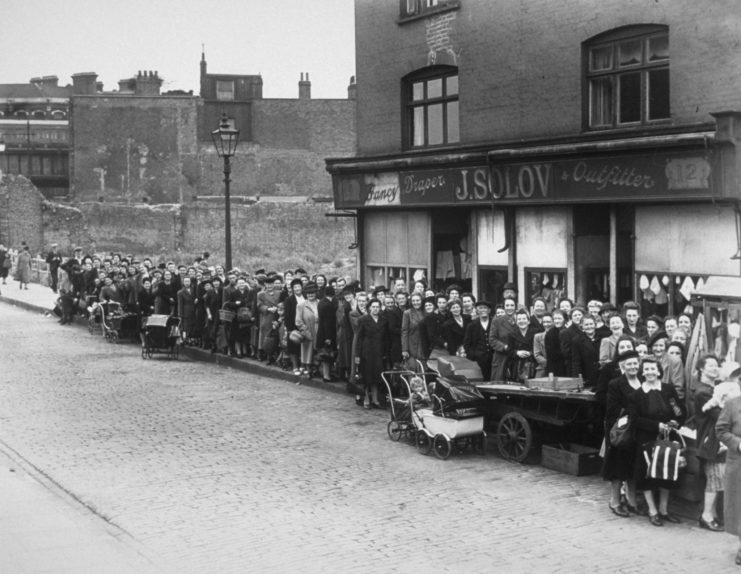
Before the start of the Second World War, Britain was heavily dependent on foreign food imports. In 1939, only about 30 percent of everything Brits ate was produced domestically. In other words, 70 percent of all food in Britain prior to the conflict originated from producers and suppliers elsewhere in the world.
As the possibility of another major war became more apparent, it was clear this had to change; the risk of German attacks on merchant shipping meant the potential of food shortages throughout Britain.
Imposing rationing on the British public
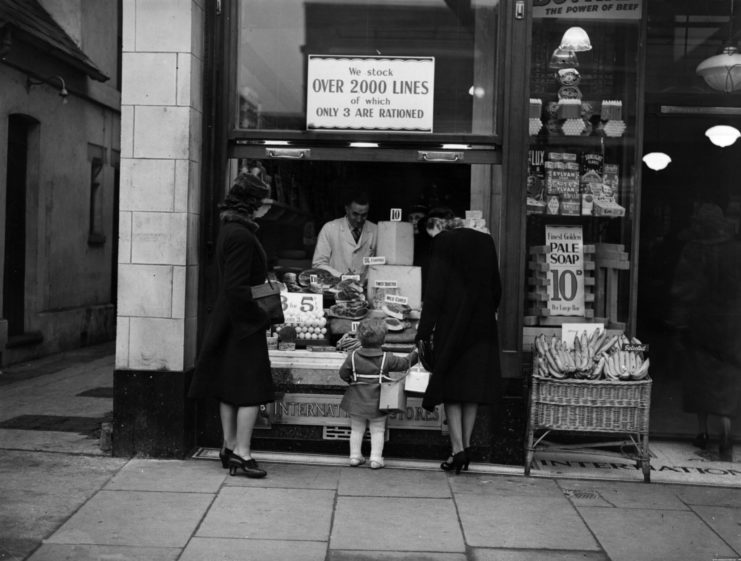
To help minimize this risk, the British government decided it needed to impose rationing. In 1939, a ration on gasoline began and, in January ’40, this was expanded to foodstuffs. This was to ensure a fair distribution of food and commodities for all, if and when they became scarce.
Rationing was first implemented on bacon, butter and sugar. However, by 1942, many other items, including milk, meat, cheese, eggs and cooking fat, also had a ration associated with them. Eventually, most foods wound up being covered by the system, with the exception of fruits and vegetables.
Establishing the Ministry of Food
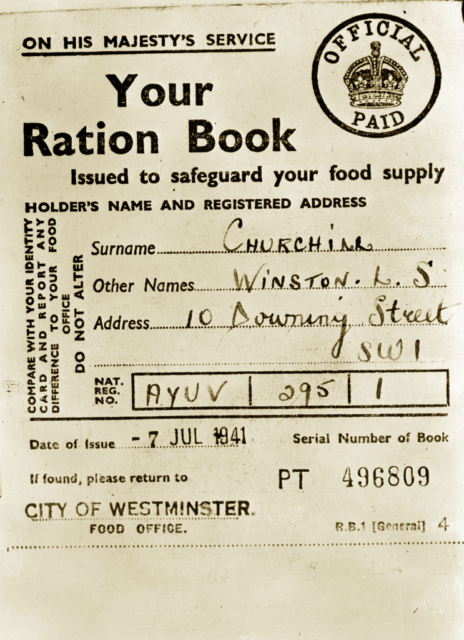
The Ministry of Food, set up in 1939, was responsible for providing an adequate diet to people in Great Britain during the Second World War, meaning it oversaw the rationing system. To ensure everything remained equal, the ministry gave every man, woman and child a ration book with coupons.
The basic foodstuffs were directly rationed by an allowance of coupons, while other items deemed less necessary for survival were rationed via a points system. Each person was allocated a certain number of points, with foods given a point value. The number of points assigned to various items changed, depending on availability and consumer demand.
However, as the conflict went on and shortages increased, it was common for people to wait in lines for long periods of time, just to find out that stores had run out of the item(s) they’d been waiting for.
What did the average British diet look like during World War II?
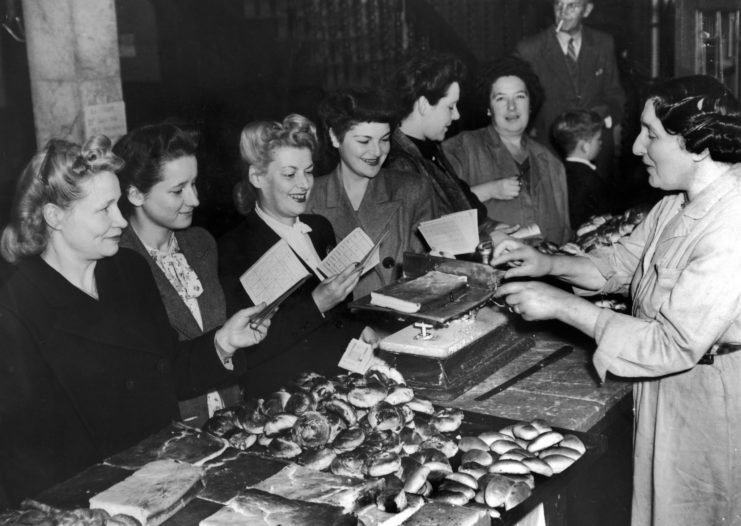
By the end of World War II, a typical weekly food ration for an adult looked like:
- Bacon and ham – Four ounces
- Other meats – Value of one shilling, two pence (or the equivalent of two chops)
- Butter – Two ounces
- Cheese – Two ounces
- Margarine – Four ounces
- Cooking fat – Four ounces
- Milk – Three pints
- Sugar – Eight ounces
- Preserves – One pound every two months
- Tea – Two ounces
- Eggs – One fresh egg (plus an allowance of dried eggs)
- Sweets – 12 ounces every four weeks
Looking at this breakdown, it certainly doesn’t seem like enough to live on, let alone enough to be a leading factor in improved health. However, this food shortage led to the British public consuming less meat, fat, eggs and sugar.
These habits proved very beneficial to overall health in the long run. Nutritionist Louise Blanchfield says the positive health effects were “due mostly to the reduced meat in their diet, an increased reliance on plant-based foods, fewer eggs, and most importantly, less sugar.” The data also suggests that deaths from strokes and heart disease decreased drastically during the Second World War, likely due to the ration on meat.
Furthermore, those who had a poor diet prior to the conflict or who didn’t previously have access to high-quality food were able to increase their intake of protein and vitamins, since they received the same rations as everyone else. Pregnant women and children were also granted additional eggs, milk and other items to keep them strong and healthy.
Increased focus on fruits and vegetables
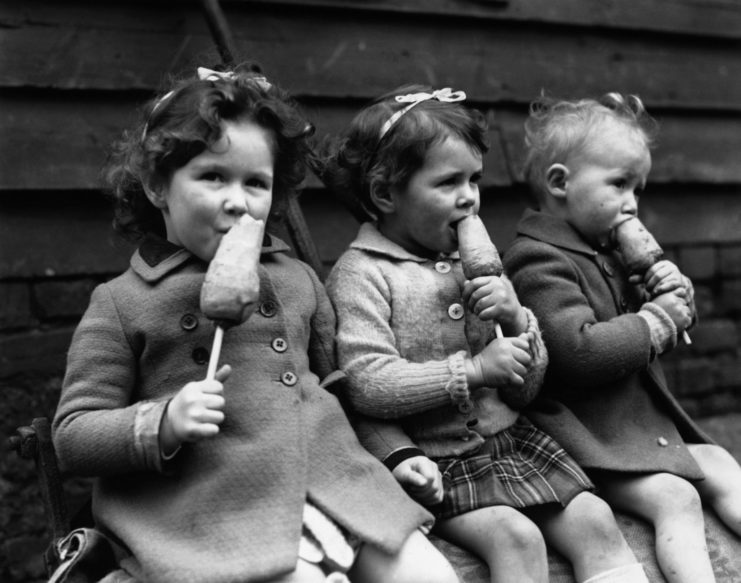
The British government also focused on initiatives that ensured food production within the country was optimal. Minister of Food Frederick James Marquis, 1st Earl of Woolton came up with the now-famous “Dig for Victory” campaign, which urged the British public to transform green spaces into vegetable patches – even the lawns outside of the Tower of London were used as a vegetable garden during World War II.
This increased focus on fruits and vegetables also led to ration cookbooks being written in such a way as to teach citizens how to best optimize the food they had available to them. These recipes and cookbooks emphasized both not wasting food and making a little go a long way.
Recipes to combat ration fatigue were ingeniously thought up. One particularly unique idea was carrots on sticks. Carrots were used as an alternative to fruits in cakes and tart,s due to their natural sweetness. They were even stuck onto sticks and given to children, instead of lollipops and ice cream – no wonder Brits were healthy during this era!
More from us: The Sausage War Between Finland and the USSR Was Among the Weirdest Battles of WWII
Want to become a trivia master? Sign up for our War History Fact of the Day newsletter!
Rationing continued to be a staple of British society well after the end of the war, eventually ending in 1954.
